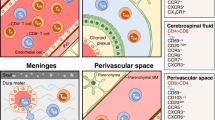Abstract
T-cell responses to pathogenic free-living amoebae,Acanthamoeba sp., were analyzed in healthy Japanese individuals. Of 20 healthy subjects, 10 (50%) showed significant proliferative responses of peripheral blood mononuclear cells to the soluble amoebic antigens in vitro. The antigens used were not mitogenic, and no evidence of amoebic superantigens was available. We established human T-cell clones reactive toAcanthamoeba, all of which were CD3- and CD4-positive, CD8-negative, and TCR-αβ-positive. We isolated two strains ofAcanthamoeba from two patients, one from a patient with meningoencephalitis (CSF strain) and the other from a patient with keratitis (K strain). Of 13 clones, 11 were reactive to the K-strain as well as to the CSF-strain antigen under human leukocyte antigen (HLA)-DR restriction, whereas the other two were specific for the K-strain antigen. All but one clone tested showed TH1-equivalent functions because these cells produced interferon (IFN)-γ in response to the amoebic antigen but produced no detectable level of interleukin 4 (IL-4). These results suggest that immunocompetent hosts might have acquired protective immunity mediated byAcanthamoeba-specific T-cells during natural sensitization.
Similar content being viewed by others
References
Cerva L (1967) Intranasal, intrapulmonary and intracranial inoculation of experimental animals withHartmannella castellanii. Folia Parasitol 14:207–215
Chadee K, Denis M, Keller K (1991) Down-regulation of murine lymphocyte responsiveness to mitogen after treatment with antigens ofEntamoeba histolytica. Parasitol Res 77:572–576
Denis M, Chadee K (1989) Murine T-cell clones againstEntamoeba histolytica: in vivo and in vitro characterization. Immunology 66:76–82
Edman U, Meraz MA, Rausser S, Agabian N, Meza I (1990) Characterization of an immuno-dominant variable surface antigen from pathogenic and nonpathogenicEntamoeba histolytica. J Exp Med 172:879–888
Eldridge AE, Tobin JOH (1967) Identification of “Ryan virus” as amoeba of genusHartmannella. BMJ 1:212–214
Ferrante A (1991) Free living amoebae: pathogenicity and immunity. Parasite Immunol 13:31–47
Ghadirian E (1990) In vitro effect of human recombinant tumor necrosis factor onEntamoeba histolytica trophozoites. Immunobiology 180:339–350
Griffin JL (1978) Pathogenic free-living amoebae. In: Kreier JP (ed) Parasitic Protozoa, vol 2. Academic Press, New York, pp 507–520
Ishibashi Y, Matsumoto Y, Kabata T, Watanabe R, Hommura S, Yasuraoka K, Ishii K (1990) Oral itraconazole and topical miconazole with debridement forAcanthamoeba keratitis. Am J Ophthalmol 109:121–126
Kasahara M, Takenouchi T, Ikeda H, Ogasawara K, Okuyama T, Ishikawa N, Wakisaka A, Kikuchi Y, Aizawa M (1983) Serologic detection of HLA-D specificities by the use of monoclonal antibodies. II. Distinction between HLA-Dw2 and HLA-Dw12. Immunogenetics 18:525–536
Lowry OH, Rosenbough NJ, Farr AL, Randall RJ (1951) Protein measurement with the folin phenol reagent. J Biol Chem 93:265–275
Mosmann TR, Coffman RL (1989) TH1 and TH2 cells: different patterns of lymphokine secretion lead to different functional properties. Annu Rev Immunol 7:145–173
Mosmann TR, Cherwinski H, Bond MW, Giedlin MA, Coffman RL (1986) Two types of murine helper T cell clone. I. Definition according to profiles of lymphokine activities and secreted proteins. J Immunol 136:2348–2357
Ohta N, Reinsmoen NL, Bach FH (1984) Cellular basis of anti-SB response. Hum Immunol 11:127–141
Ohta N, Edahiro T, Tohgi N, Ishii A, Minai M, Hosaka Y (1988) Generation and functional characterization of T cell lines and clones specific forSchistosoma japonicum egg antigen in humans. J Immunol 141:2445–2450
Owhashi M, Horii Y, Ishii A, Nawa Y (1987) Isolation of two immunogenically different allergens fromSchistosoma japonicum eggs. Int Arch Allergy Appl Immunol 83:149–154
Page FC (1985) Re-definition of the genusAcanthamoeba with descriptions of three species. J Protozool 14:709–724
Salata RA, Murray HW, Rubin BY, Ravdin JR (1987) The role of gamma interferon in generation of human macrophages cytotoxic forEntamoeba histolytica trophozoites. Am J Trop Med Hyg 37:520–524
Stratford MP, Griffiths AJ (1978) Variations in the properties and morphology of cycts ofAcanthamoeba castellanii. J Gen Microbiol 108:33–37
Tanaka Y, Suguri S, Harada M, Hayabara T, Horikami H, Shimono K, Ohta N (1993) Humoral and cellular immune responses toAcanthamoeba in a patient with amoebic meningoencephalitis and the Japanese healthy controls. Jpn J Parasitol 42:454–456
Vinayak VK, Shandil RK (1990) Recognition of 29 kDa surfaceassociated adhesive molecule ofEntamoeba histolytica by monoclonal antibodies. FEMS Microbiol Immunol 64:169–178
Wang SS, Feldman HA (1967) Isolation ofHartmannella species from human throats. N Engl J Med 277:1174–1179
Wiley CA, Safrin RE, Davis CE, Lampert PW, Braude AI, Martinez AJ, Visvesvara GS (1987)Acanthamoeba meningoencephalitis in a patient with AIDS. J Infect Dis 155:130–133
Yasukawa M, Iwamasa K, Kawamura S, Murakami S, Takada K, Hato T, Shiosaka T, Tamai T, Fukuoka T, Fujita K, Kobayashi Y (1987) Phenotypic and genotypic analysis of chronic myelogenous leukemia with T lymphoblastic and megakaryoblastic mixed crisis. Br J Haematol 66:331–336
Author information
Authors and Affiliations
Rights and permissions
About this article
Cite this article
Tanaka, Y., Suguri, S., Harada, M. et al. Acanthamoeba-specific human T-cell clones isolated from healthy individuals. Parasitol Res 80, 549–553 (1994). https://doi.org/10.1007/BF00933001
Received:
Accepted:
Issue Date:
DOI: https://doi.org/10.1007/BF00933001




